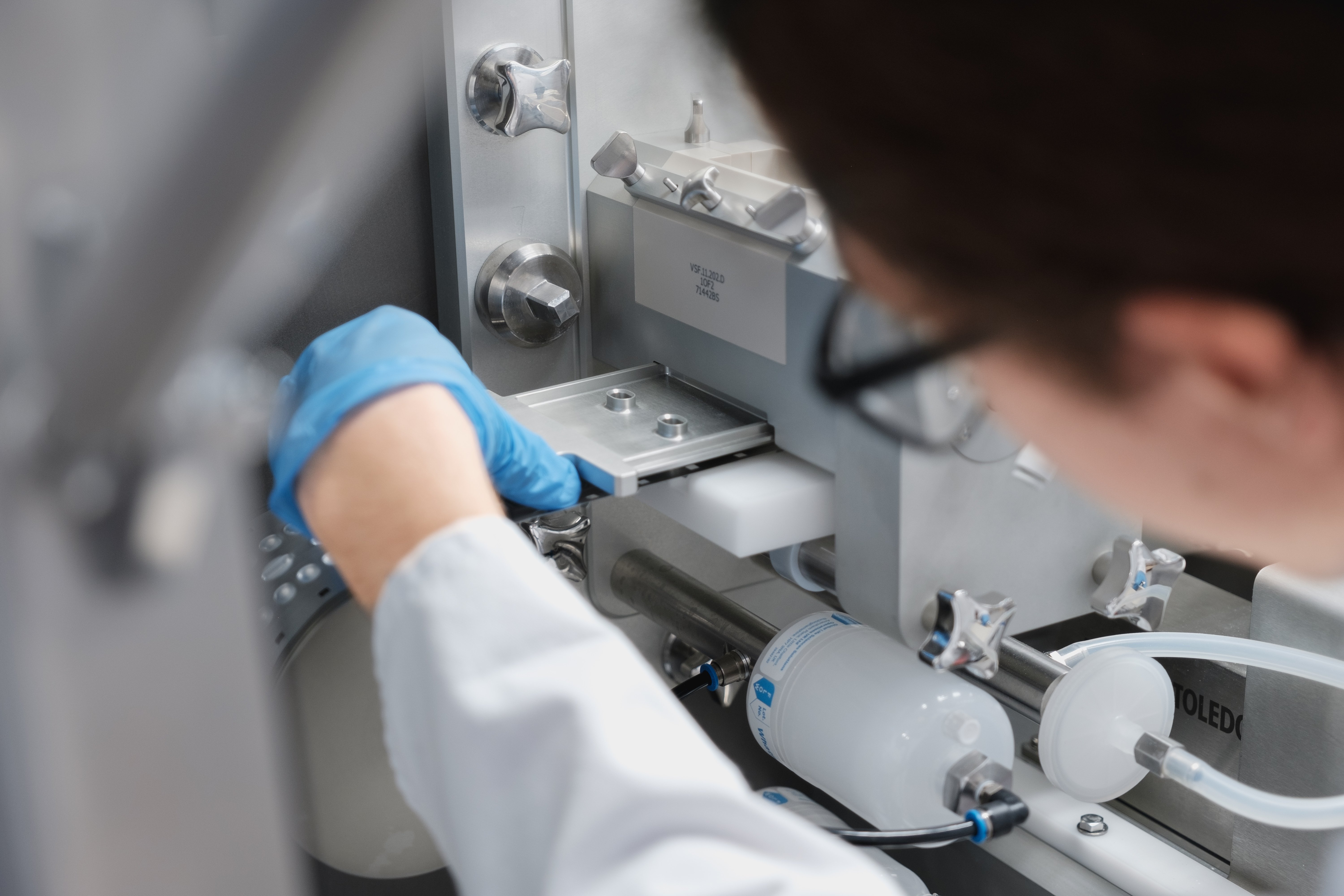3 min read
Precision Blister Filling: Ensuring Consistent Dose Delivery in DPIs
Tom Bailey : 21 November 2025
DDU is one of the most persistent challenges in dry-powder inhaler development, and few have tackled it more directly than Tom Bailey, lead inventor of the GSK Diskus filling technology and founder of 3P innovation. Here, Tom shares practical insight into what truly drives dose consistency, from powder properties to humidity control to filling precision, and how today’s advanced DPI blister-filling systems help manufacturers achieve consistent DDU, even with difficult formulations.
Tom, what exactly is Dose Delivery Uniformity (DDU), and why is it so critical for Dry Powder Inhalers (DPIs)?
"Dose Delivery Uniformity, or DDU, is all about ensuring that every inhalation a patient takes delivers the same amount of drug, whether it’s the first dose from a new inhaler or the very last one. For DPIs, consistency is vital because even small variations can lead to significant differences in lung deposition. That can mean under-treatment or side effects, both of which regulators and clinicians want to avoid. From a manufacturing perspective, DDU isn’t just a testing requirement, it’s a measure of how well your entire process, from powder formulation to filling and assembly, is under control."
During DPI filling, what are the main factors that influence DDU?
"There are several, but they all come down to how precisely and reproducibly you can meter very small quantities of powder containing the right amount of drug. Often just a few milligrams. Powder flowability, particle size, and electrostatic behaviour all matter. The filling method is also critical: whether you’re using a dosator, tamping, or a cavity-based system. Environmental conditions like humidity play a big role too, especially with hygroscopic or cohesive powders. With the GSK Diskus Filling system, a technology I led the invention of more than twenty years ago, we focused on achieving microgram-scale control of powder mass and density. 3P innovation has subsequently refined, the technology and it is this level of precision that drives consistent DDU, even for the most challenging formulations.
What are the common challenges drug manufacturers face when trying to maintain DDU during DPI filling?
"It’s a mix of physics and practicality. Fine powders don’t behave like liquids or solids; they’re prone to agglomeration, segregation, and adhesion. Many teams struggle with maintaining blend uniformity or getting consistent fill weights once they move from lab-scale to commercial filling. We often see issues like powder adhesion to equipment, electrostatic charge, or small drifts in the filling process over long runs. And of course, scale-up can introduce variability that wasn’t visible at R&D scale. Our DPI platforms are designed to minimize those effects, with precision dosing and in-process monitoring.
How can manufacturers control or reduce variability in DDU?
It is highly complex and involves many process steps, from formulation and micronisation right the way though to blending and filling so a holistic approach is necessary. And this is all before patient inhales the dose which, as we know, brings its own set of variables
From a filling perspective, a deep understanding of your powder behaviour is critical. If you characterise the flow properties and sensitivity to humidity, you can tailor both the filling process and the environment.
Then it’s about process precision, control of fill weight, gentle powder handling to avoid segregation, and triboelectrification. This is where having the right humidity in the environment becomes critical along with ionising systems. The original GSK technology really makes the difference, because it provides accurate, repeatable dosing across a wide range of powder types. We also see manufacturers gaining significant benefits from integrating in-line monitoring, gravimetric feedback or vision systems, to verify each fill.
What tests or methods are used to assess DDU, and how do they tie back to the filling process?
"Regulators define DDU testing very clearly, each inhaler must deliver a consistent dose across multiple actuations and units. That’s measured using pharmacopeial tests such as USP <601> or Ph. Eur. 0671. In practice, though, good DDU starts long before those tests. Manufacturers who monitor fill weight, capsule content, or blister uniformity during production tend to have far fewer surprises at final release testing. At 3P, we’re working with clients to correlate in-process fill weight data from our DPI filling platforms with their delivered dose results. That gives them a predictive link between filling performance and regulatory DDU outcomes, which is powerful for validation and quality assurance."
What trends or technologies are emerging to help improve DDU for DPIs?
"We’re seeing a lot of progress in three areas. First, automated micro-dosing systems, enabling sub-milligram accuracy without mechanical compaction. Second, real-time inspection technologies are making it possible to control and correct dosing in-line. And third, advanced powder engineering, such as spray-drying and engineered particle design, is improving powder flow and dispersion at the source. What’s exciting is how these technologies can now work together. When you combine a stable, predictable filling process with advanced formulations and digital feedback, achieving tight DDU isn’t just possible, it’s repeatable and scalable."
And your closing thoughts…
"DDU is the cornerstone of DPI performance, but it doesn’t have to be the bottleneck. The technology I started developing twenty years ago has matured and evolved into a proven, flexible platform for today’s inhalation products. At 3P innovation, we’re helping partners apply that same precision and process control to get their powder filling, and their products, right the first time."
Explore DPI Blister filling at 3P innovation.

Advancing DPI blister filling: from the original invention to the latest technology.
Our DPI blister filling capabilities draw on long-standing experience, our founder, Tom Bailey, is one of the named inventors of the DPI filling...

Behind the scenes of 3P innovation's Customer Care team
This week, I had the chance to sit down with Paul Beard, Operations Director at 3P innovation, to explore what truly distinguishes our Customer Care...
